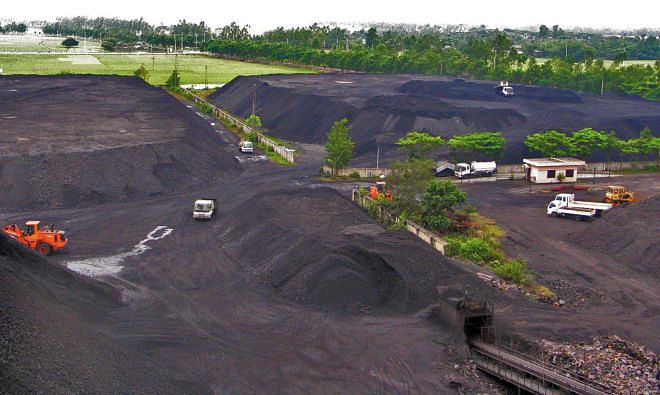Counting the cost of imported fuel
Counting the cost of imported fuel

AS stated by the prime minister, the government has no plans to tap into its own proven coal reserves. Indeed, the energy ministry officials have categorically gone on record to say that imported coal will become the mainstay for generating more than 50% of all electricity produced by 2030. A number of coal fired plants are in various stages of construction and will depend entirely on imported coal. While that is planned, realities on the ground with regards to infrastructure to handle imported coal have remains unaddressed. With no significant new gas finds on shore, we continue to deplete existing fields of Bibiana, Maulivabazar and Jalalabad. Now that Sangu gas field is also out of the picture, it would be safe to estimate that without new gas finds, the logical option to offset the gas shortage of around half a billion cubic feet of gas will have to come from oil-fired rental power plants for the foreseeable future.
And that is precisely what has happened. Going by recent newspaper reports, a government panel has recommended that existing contracts for rental and quick rental power plants be extended till 2020. Going by what has been reported in Prothom Alo on February 9, due to various intricacies involved in converting rental power units to independent power plants, it is far easier to go for an extension on existing contracts. Decisions will have to be made on price of electricity, duration run, and fuel supply and so on. The whole idea behind the rationale to extend looms from the fact that there is no viable alternative to the fuel-fired plants in operation at present. As the government in its previous term spent its time mulling over the decision on whether local coal would be extracted, no mid or long term project for coal-run plants could be finalised.
Though there are plans till date to generate about 20,000 megawatts (MW) of electricity from coal within 2030, no substantive step has been taken to develop either the infrastructure or clinch long term contracts from foreign sources. So precisely where will we end up in 2021 when the extended contracts run out? The other source of primary energy that has become somewhat of a buzzword in energy circles in the country is liquefied natural gas (LNG). For that to happen also, a LNG terminal and associated infrastructure will have to be constructed. Even with a contract landed today, the best possible timeline for completion and operation is still two years away. Then of course there is the cost factor. At current prices, importing 500 million cubic feet gas form of LNG will cost the national exchequer an estimated $2.75billion (@ $15 per mmcfd). The cost of producing electricity based on such costly fuel supply can easily be left to imagination. It will certainly not be possible for the government to continue to subsidise generated electricity indefinitely and we can safely look forward to rationalisation. The question of course at this juncture is whether industry will be able to afford electricity at such cost.
With such stark examples of “costs” involved in any fuel that is imported, we have chosen to close the chapter on local coal deposits. We have chosen to dig our collective graves. The argument that open pit mining would automatically translate into loss of farmlands is a weak one. Farmlands are being lost at an alarming proportion to make way for commercial housing and industry. This is an established fact. And environmental degradation is happening as we continue to look the other way on the wholesale toxic discharge by industry. The fact is that if it is in the national interest to develop long term fuel supply that is “affordable” and whose supply is assured, there is no alternative to development of local deposits of coal.
But for the sake of argument, let us have a look at what is in store for us if we go ahead with imported coal. With the domestic coal development chapter safely closed (with the exception of very minimal coal coming out of Barapukuria mine that produces approximately 1 million tons per annum), the country will require an estimated 30 million tons to generate around 10,000MW of electricity. Our brick fields will require another 4 – 5 million tons. Where is the infrastructure to handle such huge shipments of coal? First the port will have to be upgraded substantially. Next, substantial finances will have to be made available for capital dredging. Also, financial outlays will have to be committed yearly for the maintenance of these river routes to transport coal from the port to the various plants using river routes (the least cost option for transportation).
At current international prices, the cost per tonne of imported coal will not be less than $130 – 140 at point of delivery. That will demand $3.9 - $4.2 billion per annum. And this estimate is not final since prices of coal in the international market are subject to fluctuation which will prove immensely risky for a developing nation like Bangladesh. Should the price of coal increase, our balance of payments will certainly take a nosedive. The costs involved in developing infrastructure to handle such massive volumes of coal have not been brought into consideration here. Nor has the timeline been addressed. At the end of the day, policymakers need to ask themselves whether energy security will be addressed by putting faith on an import policy with so many unknown variables attached.
The writer is Assistant Editor, The Daily Star.